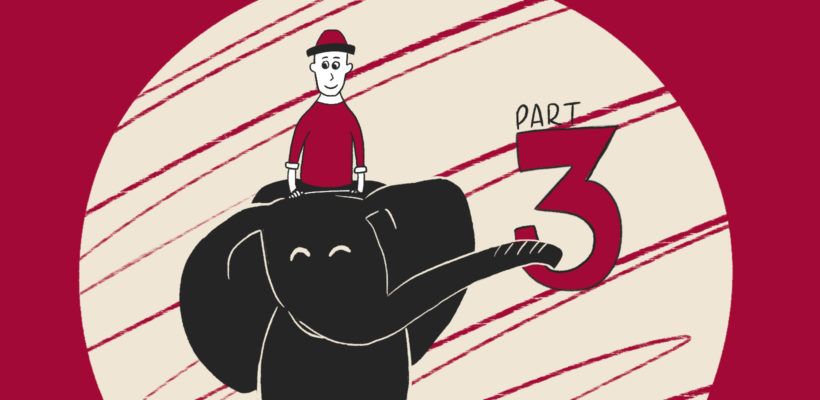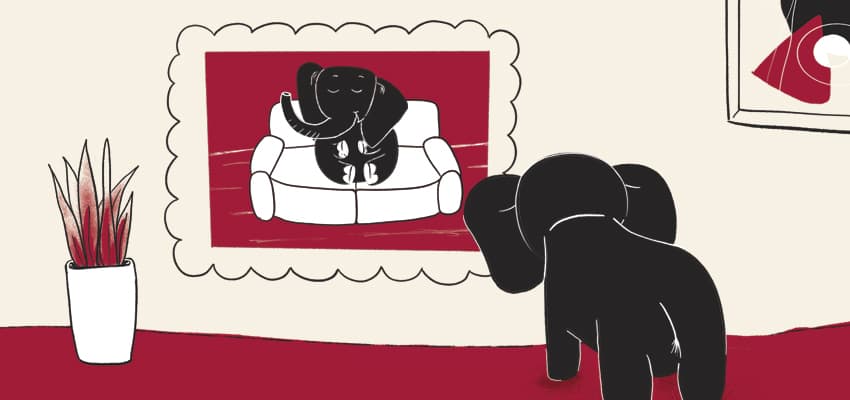
Red Chalk Studios presents our series on buyer, or customer, psychology — what it is, why it matters, and how understanding it can make a powerful difference in your business every day. If you haven’t read them yet, back up and start with:
Let’s just put it out there… Humans are strange creatures. Our brains are capable of super-complex calculations, but sometimes we walk into a room and cannot remember why. Haven’t we all stood in front of the opened fridge and wondered, what was I looking for? Admit it. You’ve done it.
Regardless of our complexity, there are some simple, instinctive parts of the brain center that seem as mystifying as they are universal. We call these instincts the “elephant.” They are the gut feelings that make decisions behind the scenes, sometimes without our realization.
In Part 3 of our series, we’re going to tackle how humans hate the idea of losing.
Deep down, on a gut-feeling level, we really, really hate losing things.
This is not about leaving the keys in a coat pocket or forgetting where we left our favorite slippers (did you check under the bed?); this is about the actual loss of something we call our own.
The thought of a burglar coming in to take not only valuables, but also sentimental items is all the more terrifying because we are losing something that belongs to us.
How does this apply to your customers?
Simple.
Your customers create mental images of ownership in their minds and will start to get attached, not wanting to “lose” the items they have already associated with being theirs.
You can help them feel that ownership by boldly and carefully painting the picture of what their life would be like with your service or product.

Studies show that people feel losses more deeply than they feel gains (psychologists call this “loss aversion”), and when you as a marketer combine that knowledge with a scarcity or urgency message, you motivate your customer to more quickly respond; they don’t want to lose the item they’ve become attached to or the opportunity to “seal the deal,” whether it’s a price reduction, limited-time offer, or something similar.
But here’s the thing. All of this has an impact on your customer, only if they believe you.
There’s trust involved. And that’s something you’re continuing to strengthen (right?) with your target audience through brand messaging and experiences.
An example of this is the furniture business that promotes its popular branded leather couches.
They’re beautifully designed, comfortable, come in many colors, and expensive. But this weekend only, they’re offering a replacement guarantee for the life of the couch. If the customer has been envisioning one of those leather couches in her home, she now doesn’t want to lose the opportunity to have the very thing she feels already has a place in the family room, now with the added reassurance that they’ll replace it if anything happens.
She buys it and is thrilled and proud of her branded leather couch that’s taken its place in her home, and she loves the furniture company that made it possible.
You, as the furniture business, have effectively appealed to the elephant using loss-aversion psychology, and motivated your customer to act on it, and at the same time, you’ve strengthened your customer’s trust in your brand. Win-win.
But.
There’s a very real danger of smashing that trust to smithereens if you use a loss-aversion strategy without caution.
Imagine how that customer feels the next weekend if she sees that you’re advertising the same branded leather couches with another motivating offer OF GREATER VALUE. Played. Betrayed. Not feeling that lovin’ feeling.
Here’s the thing: Loss aversion only works if your customer believes they have something to lose. And if they believe you when you describe the purchasing opportunity you’re offering them.
Good advice to follow:
- Be real. (If you say supplies are low, then it’s because you truly have a limited inventory. This should be an infrequent opportunity.)
- Tout the benefits so strongly that customers will become attached and you won’t have to use urgency.
- Don’t be over the top. (“greatest sale ever” or “once-in-a-lifetime offer”)
- Develop an “abandoned cart” strategy; make sure those “almost” customers understand what they’ll be losing if they don’t complete their order; write about it so that they feel they have to have it.
It’s mine, right?
These tactics have been tried and proven time and time again. If you can tie your product to your audience in a way that gives them the impression they already own it, it becomes a difficult decision for them NOT to buy it.
Now you know… The elephant sometimes works in not-so-mysterious ways, and you can turn that knowledge of losing into winning marketing strategies.
Up next in our Understanding Customer Psychology series: An Elephant is Making Your Financial Decisions.


